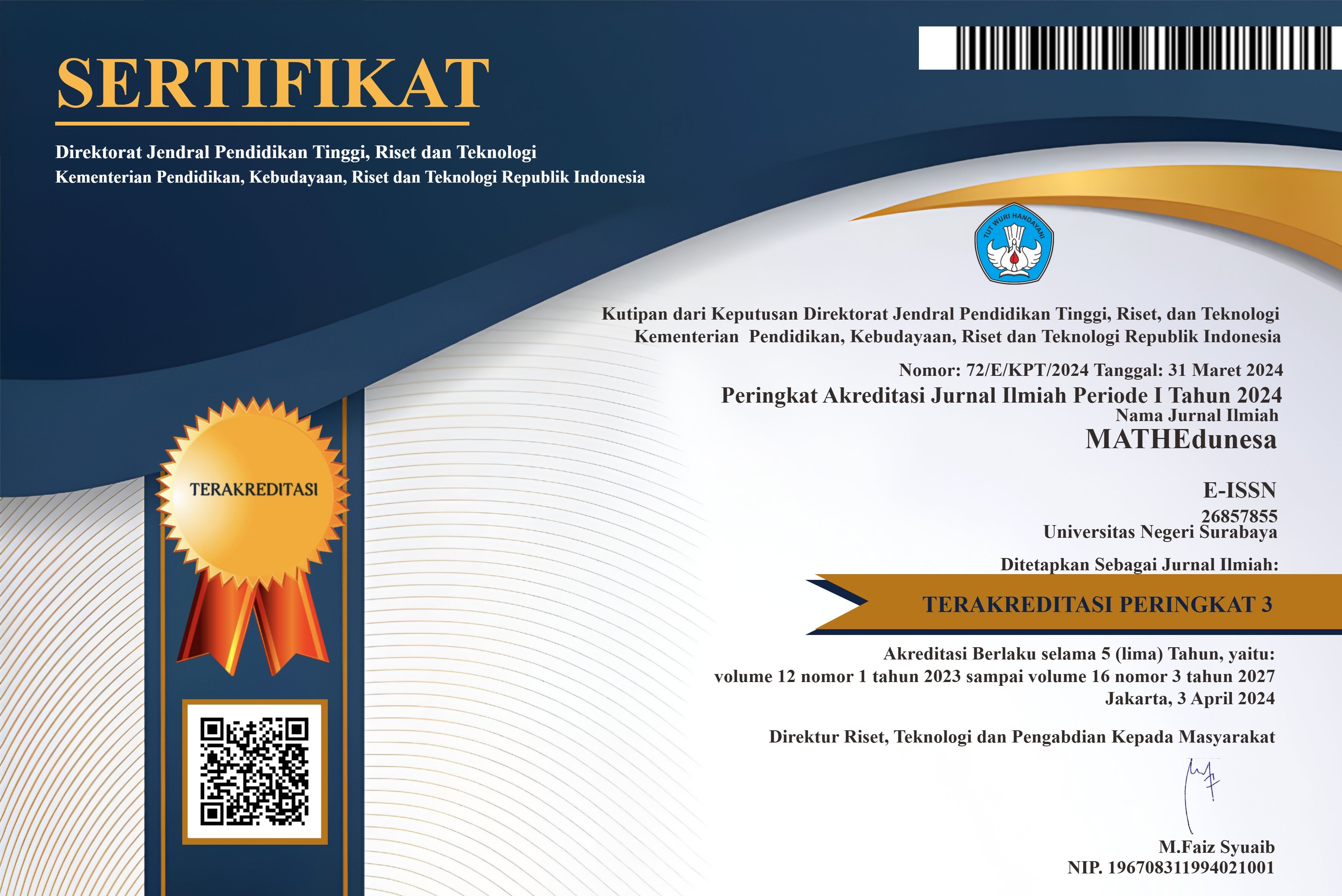Verbal Mathematical Communication in Solving Sequence and Series Problem Based on Learning Style
DOI:
https://doi.org/10.26740/mathedunesa.v13n3.p870-882Abstract
The research aims to describe students’ verbal mathematical communication skills in solving sequence and series problems, considering their visual, auditory, and kinesthetic learning style. The study addresses the issue that many students still struggle to express their thoughts on sequence and series problems. A qualitative approach is employed in this study, focusing on grade XI students who exhibit a dominant visual, auditory, and kinesthetic learning style. Data collection methods include a learning style assessment, a prerequisite test, and both oral test and written tests on mathematical problem-solving. Results from the oral and written tests are analyzed to characterize each student’s verbal and written mathematical communication. Findings indicate that visual students struggle to verbally communicate mathematical ideas but are able to provide solutions and conclusions. Auditory learners, who excel at learning through listening, meet all indicators, effectively communicating mathematical ideas, presenting solutions, and making conclusions. Meanwhile, kinesthetic learners face challenges to satisfy one of the indicators, namely making conclusions but able to communicate mathematical ideas and provide the solution in their preferred way.
Downloads
Downloads
Published
Issue
Section
 Abstract views: 58
,
Abstract views: 58
, PDF Downloads: 57
PDF Downloads: 57




